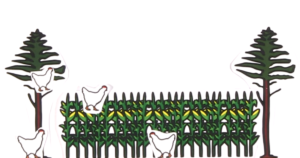This post is also available in: Español (Spanish) Français (French) Deutsch (German)
What are agro-silvopastoral systems?
Agro-silvopastoral systems is a collective term for land-use systems, which combine a woody component (trees or shrubs) with cattle on the same site. These systems represent a model of production and conservation based on silvi-culture, the practice of growing trees, complementary to pre-existing agricultural activities.
It is foremost in drylands that forests and agrosilvopastoral systems play crucial economic, social and environmental roles. These include improved environmental sustainability and resilience of wider landscapes. These systems harbour species that are particularly well adapted to extreme ecological conditions and provide essential goods and environmental services.
Agrosilvopastoral systems are of great importance for sustaining rural communities in drylands, especially low-income communities. For example, agro-silvopastoral systems in Africa provide around 320 million people with basic needs such as medicinal supplies and woodfuel.
Components of an agro-silvopastoral system
The agro-silvopastoral system tool gives you a visual overview of the synergies in this system. Click on the green hotspots for more information on specific system features!
Agro-silvopastoral system by Stefan Hügel, Isidora Vrbavac and Ruth Schaldach is licensed under a Creative Commons Attribution-ShareAlike 4.0 International License.
Recommended further readings:
- A Review of Agroforestry Practices with an Introduction to the Arba Minch Slope Farming Project
- RUVIVAL Book Series: Productive Ponds as Part of Rainwater Harvesting Systems in the Context of the Slope Farming Project Arba Minch, Ethiopia



